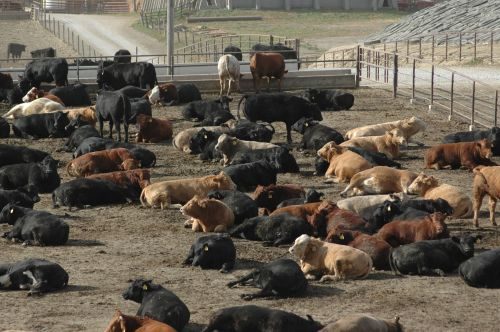21 Management Practices to Keep Cattle on Feed During the Heat
Posted: July 24, 2017 | Written By: Heidi Doering-Resch, M.S., Form-A-Feed Nutrition and Production Specialist

Summer heat is here and with that comes all the extra work to maintain cattle performance. Aside from using Hydro-Lac® in your feedlot ration, what else do we need to worry about and be checking on during the heat to make sure ration consistency stays palatable?
Yards that have less feed drops due to heat events have the following in common:
- Feed drops due to heat were less than 8 percent.
- Feed intakes (dry matter intake) are recorded daily to manage these changes.
- Feed refusals are scraped out of bunks in no less than two days to reduce feed from becoming spoiled in the bunks.
- Extra water tanks were added to the pens.
- Water tanks were being cleaned once a week minimum.
- Hydro-Lac was used at minimum of 0.2 lbs per head per day up to .5 lbs per head per day
- Bovine BlueLite® was added in the water tanks.
- Cattle were not overstocked, in fact under-stocking allowed them better performance during heat events.
- Fermented feeds were only being knocked down for a days worth of feeding, nothing reheating overnight for morning feeding, and defacing was happening from the top of the pile down.
- Feeds were well mixed and confirmed via TMR analysis and visual inspection to assure elimination of sorting or refusals.
- Feed in the bunk was not hot during inspection, neither in the morning or in the evening.
- Feedings were being done early in the morning and later afternoon to coincide with cattle preference and reduce the heat of fermentation occurring during the hottest times of the day.
- More feed was being delivered under roof (30% south bunk or outside and 70% north bunk or under roof).
- More feed was being delivered during evening feeding (60 or 70% vs split 50:50).
- Flies were sprayed at least 2-3 times a week.
- Pen perimeters were scraped 2-3 times a week.
- Packs were bedded every other day to every 3rd day.
- Open pens bedded on the mound to allow less conduction of heat onto a black mound and have cattle bed down where better airflow will reach them.
- Fans were running over the tops of the cattle in pack barns.
- Sprinklers were being run on outside cattle allowing them to spread out with its use.
- Weeds were either sprayed or mowed off to deter both insects, rodents or air blockage from around bunks.
With these protocols in place, many cattle producers do not succumb to the increase in summer performance issues due to heat stress effects on cattle intake and therefore, caloric reduction. If feed maintains quality and cattle are kept dry and cool performance will be maintained in the hot summer weather.